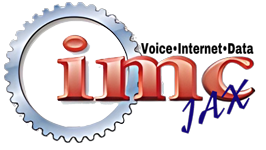Moving your IT to the Cloud? It seems like everyone is doing it. According to a 2011 survey by IPED at least 50% of small businesses will adopt cloud computing within their business by the end of 2012. With all of the hype about cloud computing, here are some things to consider before you make the move.
Let’s start off with what is Cloud Computing? The easiest way to explain the “Cloud” is think of it as using computer assets (software, servers, etc.) that are located somewhere off-site from your company’s location. Cloud computing is typically purchased on a subscription basis (i.e. a monthly service fee) avoiding some of the up front costs. Also, the Cloud may be a shared resource (i.e. Public Cloud) or dedicated resource (i.e. Private Cloud).
The first thing your need to decide is: what do you want to gain by moving to the Cloud? Are you trying to avoiding making capital expenditures? Do you want to pay-as-you go for your IT infrastructure as an operating expense instead of a capital expense? Are you concerned about being able to recover from a backup in the event a disaster, such as, a fire, earthquake or hurricane that could destroys all your computers and data on site? If any of this appeals to you, then Cloud Computing might either augment or replace critical IT assets within your company today. However, these benefits do not come without risk.
If you decide to replace your line of business application (e.g. Accounting Software) with a Cloud alternative commonly known as Software as a Service (SaaS) you won’t have to pay for the software and operating systems licenses upfront. You won’t pay for the hardware or installation either. Keep in mind, while you are paying for this as an operating expense you typically won’t own the IT asset either. This means you will continue to pay for a subscription to use the service. Additionally, be sure you can configure the application to meet your business needs. Many SaaS applications are configurable but not customizable. Also, SaaS applications may be more challenging to integrate with your other line of business applications (e.g. customer management system). Also, make sure you can easily migrate your data to the new SaaS application.
If you worry that your backup may not allow you to recover in an emergency, you may consider looking at a Cloud based Business Continuity and Disaster Recovery solution. The Cloud allows you to take advantage of the same IT infrastructure as a large enterprise has, at a cost that is affordable to your business. You need to consider the risks of privacy when you share computing resources with other businesses. A “Public Cloud” solution may be affordable, however, your industry regulations may not allow that. You may require a “Private Cloud” solution, which has added security and added costs.
Whichever solution you choose, make sure you understand the Service Level Agreement (SLA) from your Cloud provider. You need to understand what happens if you have downtime or suffer a data loss. Be clear about who is responsible and what options you have.
Cloud Computing, done right, can provide savings and business benefits for the small business owner. If you are uncertain about how to take advantage of the Cloud, contact your trusted IT Service Provider for advice.



